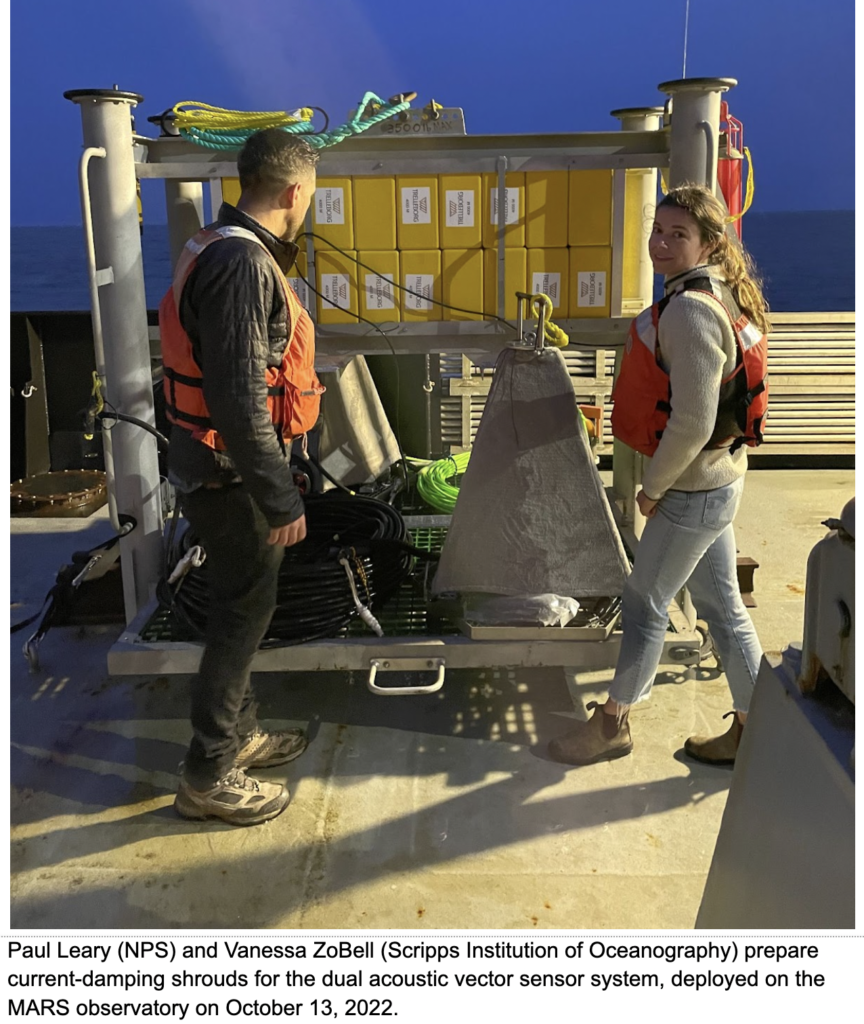The Monterey Bay National Marine Sanctuary (MBNMS) is an important foraging habitat for some of the largest animal species in the world, including blue, fin, and humpback whales. As these species are a crucial part of the ecosystem and can also be impacted by humans, understanding their behavior and ecology is important to scientists and natural resource managers. The challenges of studying such highly mobile species have been met with creative advancements in methods, such as animal-borne tags and photo-identification powered by machine learning. Because the great whales produce loud sounds that travel far underwater, passive acoustic monitoring (PAM) has long been an essential method of detecting their presence and behavior. A key advancement in PAM technology is further enabling description of whale habitat occupancy and movement. A recent study using an acoustic vector sensor connected to the Monterey Accelerated Research System (MARS) cabled observatory has allowed scientists to investigate how blue whales move within MBNMS in response to rapid changes in ecosystem conditions. In this initial study, blue whales were observed to repeatedly track a specific ocean circulation feature, coastal upwelling plumes, within which their essential prey – krill – form dense aggregations. When this ocean circulation feature was absent, blue whales moved to offshore habitat that is transected by shipping lanes, where there is elevated risk of mortality from collision with large, fast-moving vessels. Other whale species are currently being studied using this novel research approach. This collaboration between non-profit (MBARI, Cascadia Research Collective), academic (Naval Postgraduate School, Stanford), governmental (NOAA / MBNMS), and private (SEA) entities is expanding with the recent deployment of a dual acoustic vector sensor system on the MARS observatory, which will allow the team to more accurately locate animals within the ecosystem and track their movements.
The original research article is titled “Oceanic giants dance to atmospheric rhythms: Ephemeral wind-driven resource tracking by blue whales” and can be found here https://onlinelibrary.wiley.com/doi/10.1111/ele.14116.
